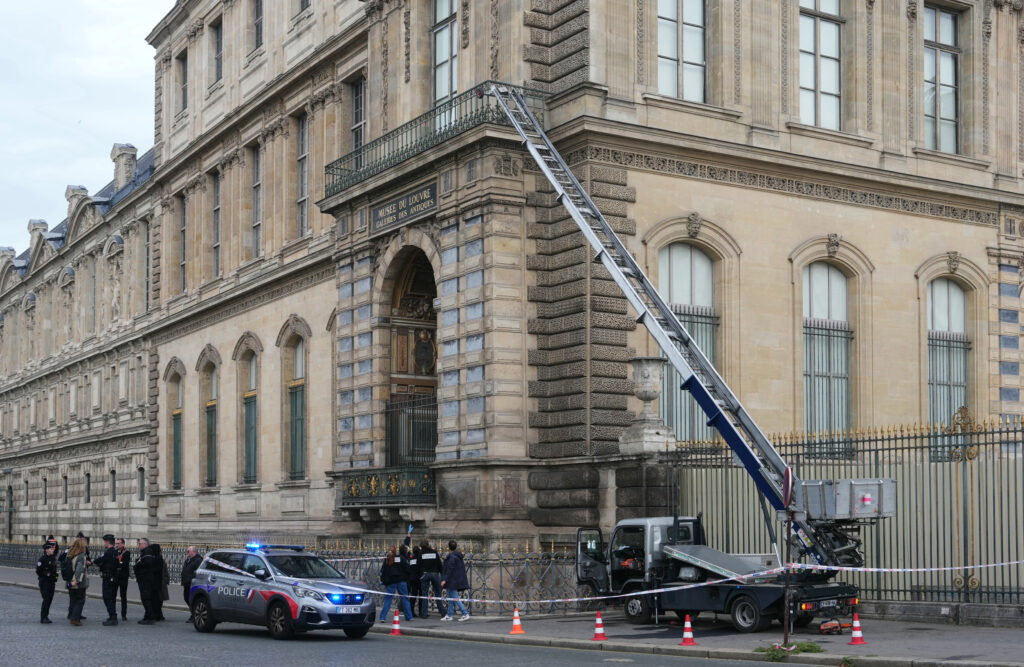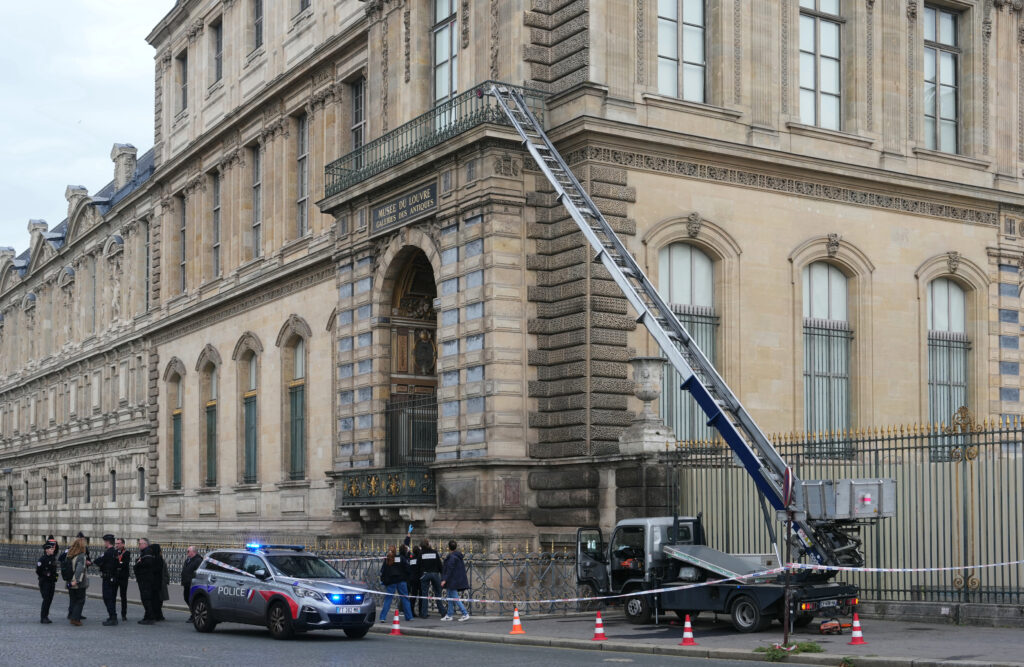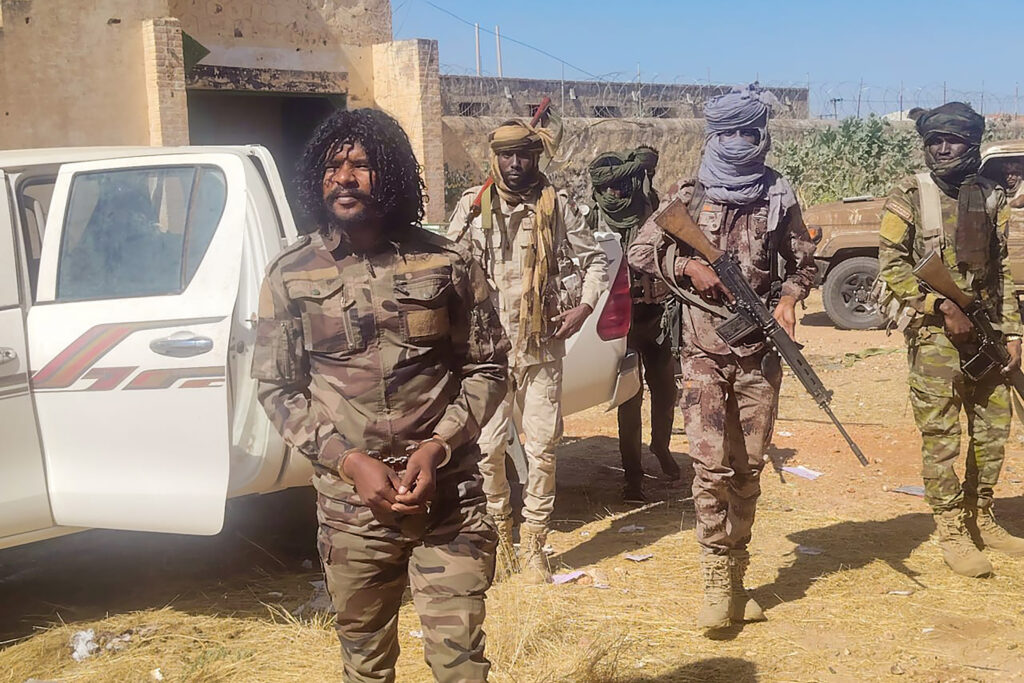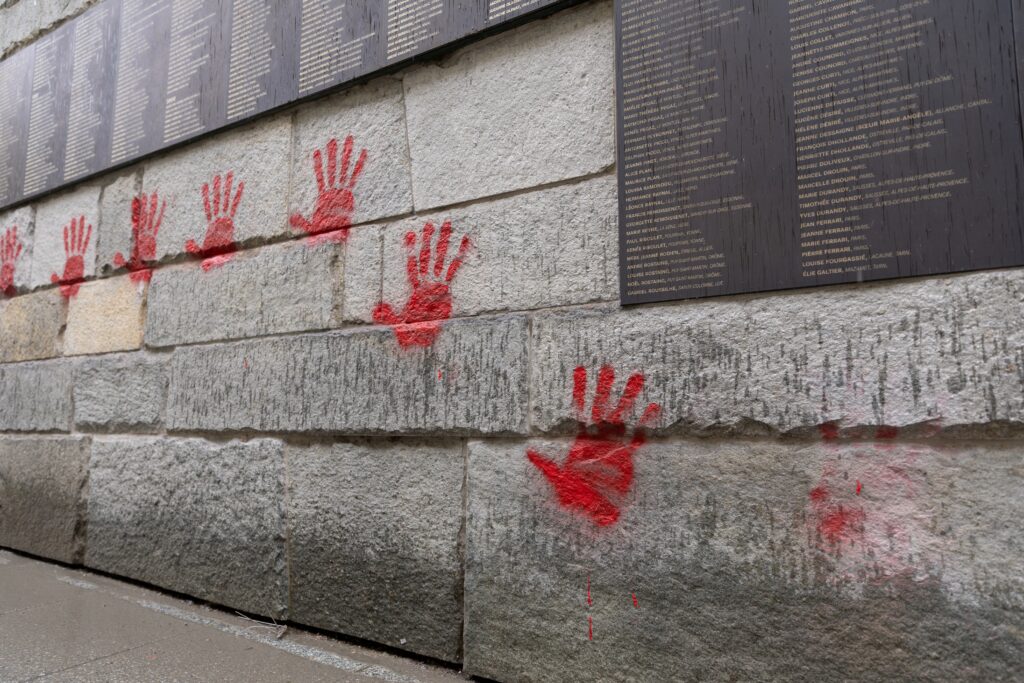Sécurisation du Louvre: Dati pointe une “sous-estimation” des risques et annonce des “mesures d’urgence”
Des protocoles “obsolètes” et une “sous-estimation chronique” des risques: Rachida Dati a dévoilé vendredi les premières conclusions de l’enquête administrative lancée après le casse du Louvre et promis des “mesures d’urgence” avant la fin de l’année pour tenter de sécuriser les abords du musée.”Ça fait plus de vingt ans que les risques intrusion et vol ont été structurellement sous-estimés” au Louvre, a estimé la ministre de la Culture sur TF1, près de deux semaines après le spectaculaire cambriolage du musée le plus visité au monde. “On ne peut pas continuer comme ça”, a-t-elle ajouté.Mme Dati a expliqué fonder son diagnostic sur les premières conclusions de l’enquête administrative lancée au lendemain du cambriolage, au cours duquel huit joyaux de la Couronne d’une valeur estimée à 88 millions d’euros ont été dérobés en plein jour par un commando de quatre malfaiteurs. Les bijoux restent introuvables.Selon la ministre, ce rapport provisoire de l’Inspection générale des affaires culturelles (Igac) a mis en lumière une “sous-estimation chronique, structurelle, du risque intrusion et vol” par le musée, “un sous-équipement des dispositifs de sécurité”, une gouvernance “pas adaptée” et des protocoles de réaction aux vols et intrusions “totalement obsolètes”.Tout en réaffirmant que les dispositifs de sécurité à l’intérieur du Louvre avaient fonctionné, la ministre a annoncé des mesures pour répondre à une “faille sécuritaire majeure” à l’extérieur du musée.”Nous allons mettre des dispositifs anti-voiture-béliers, anti-intrusion”, a-t-elle annoncé, assurant que ces nouvelles installations seraient en place “avant la fin de l’année”.Dans un communiqué, le ministère de la Culture a précisé que ces dispositifs incluaient des “caméras périmétriques” sur le bâtiment et indiqué que le pré-rapport avait relevé “un certain nombre de failles sécuritaires”.Le jour du casse, les quatre malfaiteurs avaient pu garer un camion-élévateur au pied du musée, permettant à deux d’entre eux de se hisser avec une nacelle jusqu’à la galerie d’Apollon où sont conservés les joyaux de la Couronne.Sous pression depuis ce cambriolage à la portée planétaire, la présidente du Louvre, Laurence des Cars, avait expliqué la semaine dernière que le renforcement de la sécurité extérieure du Louvre était déjà dans les tuyaux et que le premier des équipements “anti-béliers” préconisés fin 2023 par la Préfecture de police était en cours de pose. – Conseil d’administration d’urgence -Sur TF1, la ministre a par ailleurs ordonné à Mme des Cars, à la tête du Louvre depuis 2021, de réunir d’urgence un conseil d’administration, afin de “revoir la gouvernance” de l’établissement et créer “une nouvelle direction de la sûreté et de la sécurité au niveau de la présidence” du musée.Sans indiquer si elle renouvelait sa confiance à Mme des Cars, la ministre a par ailleurs demandé la réalisation d’ici à la fin de l’année d’un “audit global sur les risques d’intrusion et de vol” au Louvre.Les protocoles et procédures en cas d’intrusion ou vol devront par ailleurs être “actualisés” avant la fin de l’année, indique le ministère dans son communiqué, assurant que l’ensemble de ces mesures ne constituaient qu’une “première étape” avant la remise du rapport définitif à Mme Dati “dans les prochains jours”. Réagissant à ces annonces, la CFDT-Culture a salué une “volonté d’agir rapidement pour combler les failles de sécurité” mais a affirmé “que ces dysfonctionnements avaient été dénoncés depuis plusieurs années par les organisations syndicales du musée”.”Les personnels n’ont cessé d’alerter sur les conséquences d’un sous-effectif chronique, qui fragilise durablement la sûreté des collections comme la sécurité des visiteurs”, assure le syndicat, selon qui il y a en moyenne un agent d’accueil et de surveillance pour un millier de visiteurs.Les conclusions provisoires de l’enquête administrative font écho à plusieurs récents diagnostics alarmants sur la sécurité du musée, qui accueille chaque année près de neuf millions de visiteurs.Sur le front de l’enquête judiciaire, sept personnes ont au total été interpellées depuis le casse et deux d’entre elles ont été mises en examen et écrouées, soupçonnées d’avoir fait partie du commando sur place.








